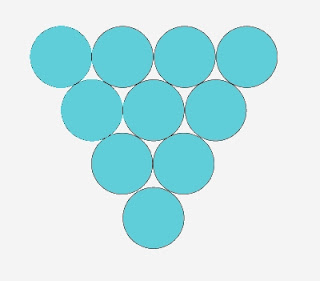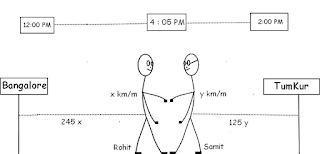Calculation of Time For The Journey
What was the journey?
Let the speed of RED ant is R & that of BLACK ant is B
Let time taken by them to meet be T.
Now we will apply the basic formula of distance:
Distance = Speed * Time.
The RED ant travels R T distance before meeting and 20 R after the meeting.
The BLACK ant travels B T distance before meeting and 5 B after the meeting.
Thus,
RT = 5B and BT = 20R i.e. B = 20R/T, putting in RT = 5B
R T = [20R/T] * 5
RT = 100R/T
T^2 = 100
T = 10.
Thus the RED ant will require 10 + 20 = 30 seconds to travel the distance.
And the BLACK ant will take 10 + 5 = 15 seconds to travel the distance.






























